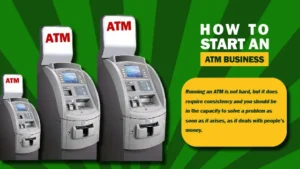At first, this topic may be confusing, particularly if you need to understand the difference between debits and credits. Accounting professionals have, of course, found things easier thanks to the debit credit cheat sheet.
With this credit debit cheat sheet, tasks that were before difficult are now simple. This page makes it easy to keep track of charges because it displays the precise location of each debit and credit account. The credit debit cheat sheet combines all the complex information and simplifies it into manageable stages.
This accounting cheat sheet helps accountants, both new and old, work quickly and do work that people trust to be right. You don’t have to remember every deal and detail.
Why do we debit?
“Debit” denotes the removal of funds from a bank account. To pay our bills, we withdraw funds from our income or savings accounts or obtain cash from our debit cards.
Any additions or withdrawals of funds from an account that represents debt, equity, or income are referred to as debits. Assume that a pizza place uses cash from its assets to pay for wheat that it purchases from a neighboring retailer.
What does credit mean?
If you have “credit,” you owe more than you can afford to pay back. We all do this when we use a credit card to pay for something or a bill, we don’t have enough cash for.
The amount that is added to the accounts for debt, ownership, and income and taken away from the accounts for assets and costs is called a credit. The amount of money a business owes grows when it borrows money.
Debit and credit accounting formula
A debit credit cheat sheet or Debts and credits can help you figure out what your business is worth in total. Debts and credits are terms used in accounting to talk about property, assets, and debts. The basic accounting method is made up of these three parts.
Assets: Things that are worth money and belong to a person, a business, or a government are called assets.
Liability: Businesses need to pay back the money they owe. It could be money, things, or help.
Equity: The book value of a company is the difference between its loans and its assets as shown on its balance sheet.
Formula
Equity = Assets – Liability
Five rules of debit and credit
The following is the simplest method to recall what accounting terms debit and credit mean.
- On the debit side, assets rise, and on the credit side, they fall.
- Liabilities rise when credit is extended and fall when debit is received.
- On the credit side, equity rises, while on the debit side, it falls.
- Revenue rises while using credit and falls when using debit.
- On the debit side, expenses rise, while on the credit side, they fall.
What is a Credit Debit Cheat Sheet?
In accounting, a debit credit cheat sheet is a simple tool that helps you keep track of how money moves. Its job is to help you quickly understand and use the rules for adding and getting money out of different accounts so that your books stay correct and balanced.
Accounting Cheat Sheet for Common Transactions
It’s easy to keep track of the activities you do daily with our Debit Credit Cheat Sheet. Conversely, debiting increases expenditures and assets while crediting increases income and debts. Using this approach to maintain accurate and equitable data is straightforward.
Handles finances and banks
It gets taken away when money increases. When it falls, it’s got value. I thought it was easy. In this instance, when you pay a bill, money is deposited into your cash account. But it loses money when you get paid.
Transactions revenue and sales
Every time it’s manufactured, money is added. Transfer funds from your cash or accounts receivable to your sales account whenever someone purchases something from you.
Price-Based Agreements
Your revenue is reduced when expenses are recorded as debits. Payments for expenses including rent, bills, and office supplies are made with this account.
Debt and loan transactions
When you record the loan, funds from a cash account or a spending account will be transferred to the debt account if the loan is used for any purpose.
How important it is to have an Accounting Cheat Sheet
Credits and debits or debit credit cheat sheet are the fundamental components of accounting. That is, you could make mistakes that hurt your financial records if you don’t understand them. You can do accounting better if you know a lot about it. This is when an accounting cheat sheet comes in handy.
How a cheat sheet can help you daily in accounting
A debit credit cheat sheet could be your best friend if you need to keep track of cash coming in and going out. It saves you time because you don’t have to check each transaction to see what should be charged and paid.
How to Make an Easy-to-Use Credit Debit Cheat Sheet
Using a credit debit cheat sheet makes it easy to make sure that all of your transactions are appropriately recorded. Because the help sheet instructs you on whether to charge or credit an account, there is no possibility of error.
“Double-entry Bookkeeping System” what does that mean?
Keeping track of money activities in accounting journals can be done using the double-entry method. We will then talk about the general ledger, which has a summary of all the journal notes that the business keeps.
For this way of keeping track of money to be valid, each entry in this book must match an entry in another book that is both the same and the opposite. This means that every buy has both a debit booking and a credit booking linked to it.
The total of all the debits and payments must be negative. If this condition isn’t met, mistakes will appear in the financial equation and the journal record. Since the basic accounting equation is based on the sum of assets, liabilities, and ownership, this method helps businesses keep accurate records.
What is a General Ledger?
A business’s primary financial record is its general ledger. It has details about items on the Balance Sheet and the Income Statement. Check out this example of a company’s general ledger. The asset side of its Balance Sheet shows its cash on hand, accounts payable, inventory, and property plant and equipment.
Usually, the general ledger is made up of sub-ledgers that hold information about each account. For example, the general ledger for accounts receivable will have sub-ledgers that show how much each customer owes. In the same way, an inventory general ledger will have sub-ledgers that show how raw materials, work in progress, and finished things are split up.
Accounts in the general ledger are called “T-accounts” because they are written in the shape of the letter T. On a T-account, debit things are always written on the left side, and credits are always written on the right side.
Accounting Cheat Sheet in the Digital World
We don’t have to keep track of a lot of numbers or dirty books anymore. The “golden age” of computerized accounting is currently upon us. Technology takes care of the boring stuff, so you can have fun and grow your business. Here’s one way that modern technology has changed the way we think about money coming in and going out.
Software for accounting
You no longer need to bring the books with you! Keeping track of transactions and ensuring that the books are balanced is made easier with the many accounting tools available today. Here are a few popular choices.
- QuickBooks: There are numerous ways to create a budget with QuickBooks. Everything is taken care of, including payroll processing, monitoring expenditures, and maintaining accounting records.
You don’t need to know a lot about spending because it’s easy to utilize. Connecting to your bank accounts and other business tools is also simple. - Xero: A lot of people like Xero as accounting software since it is simple to use and has many useful traits.
It’s great for new and small businesses because they can immediately see their money and have money sent to their banks. - FreshBooks: This cloud-based software is made for small businesses and freelancers. It allows you to focus on your business instead of the numbers when you use it to keep track of your time, expenses, and bills.
Conclusion
Every accounting system is built on a foundation of debits and credits. Your finances may be kept up to date and easily managed if you use a basic debit credit cheat sheet. The main lesson is balance; there must always be matching on both sides of the transaction. You’ll have a useful tool to streamline your accounting procedure and steer clear of typical blunders with this credit debit cheat sheet. These fundamental ideas can help you maintain orderly books whether you deal with cash, loans, or sales.











